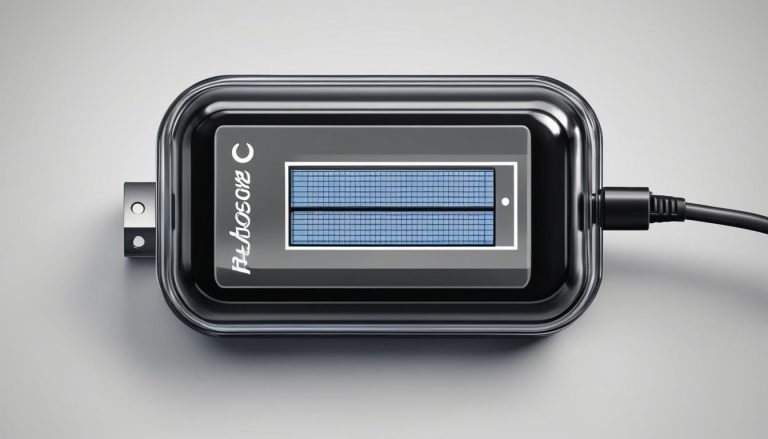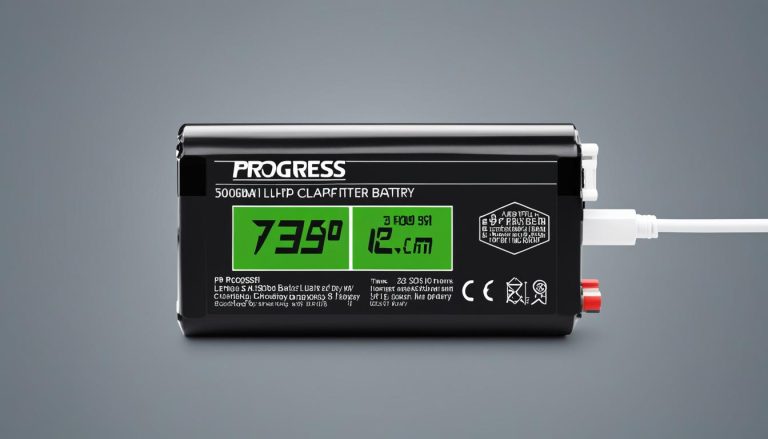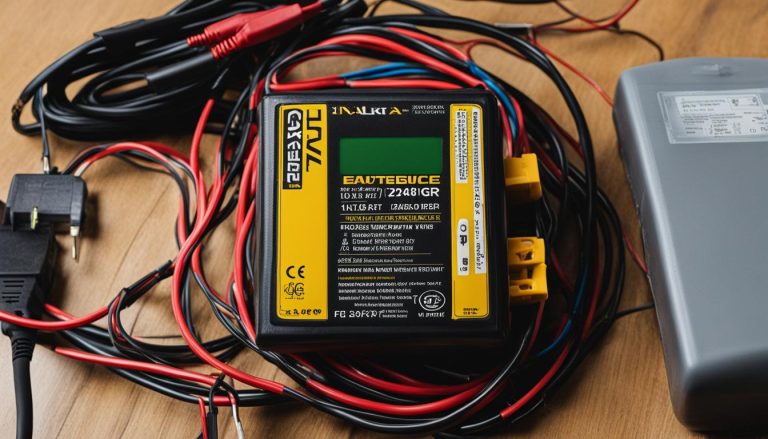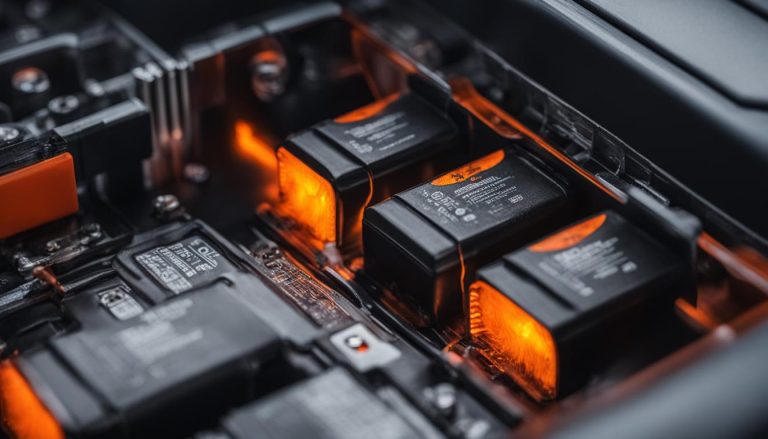Charging 101: How Does an Inverter Charge a Battery?
batterychargers.site and its partners may earn a commission if you purchase a product through one of our links
Are you curious about how an inverter charges a battery? Whether you want to charge your devices while on the road or harness solar power for off-the-grid adventures, understanding the charging process is essential. In this article, we’ll explore the mechanics of inverter battery charging and the benefits it offers. So, let’s dive in and discover how your battery gets charged with the help of an inverter.
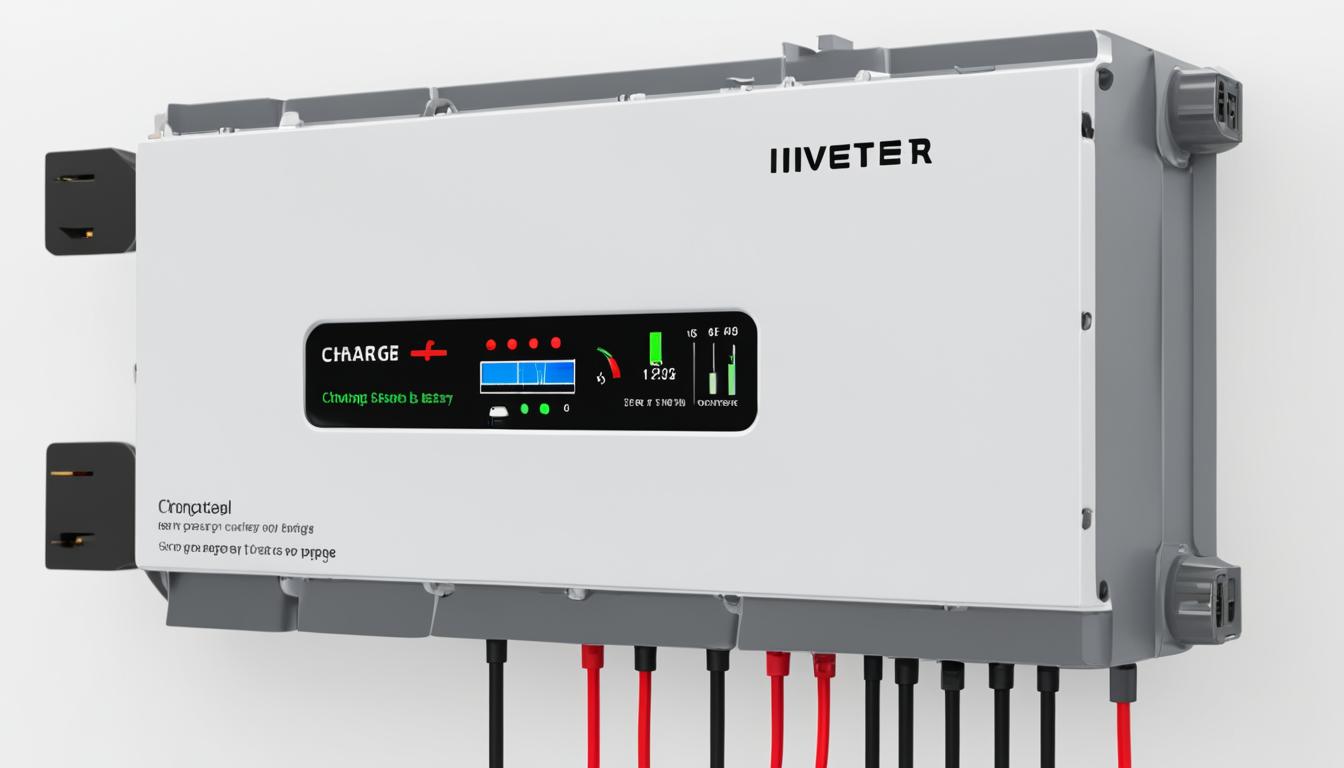
Key Takeaways:
- An inverter converts DC power from a vehicle battery to AC power for using devices while driving.
- Solar battery chargers use solar panels to harness the sun’s energy and charge batteries.
- Inverters do not directly charge batteries but can be connected to a charger to convert AC power to DC power.
- Inverter chargers come with integrated converter functions to charge house batteries.
- The solar energy produced by solar panels is stored in batteries, providing a reliable off-the-grid power source.
Understanding Inverter Battery Charging
When it comes to charging batteries, inverters play a crucial role in the process. However, it’s important to note that inverters themselves do not directly charge batteries. Instead, they can be connected to a charger that converts AC power to DC power for the batteries.
Inverter chargers, such as the Magnum Pure Sine 2000 watt inverter, are equipped with integrated converter functions specifically designed to charge house batteries. These inverter chargers streamline the charging process, ensuring efficient power transfer to the batteries.
It’s worth mentioning that inverters can have different voltage outputs for start batteries and house batteries, depending on the specific charging requirements. This allows for customized charging and optimization of battery performance.
When the engine is running, the alternator takes charge of charging both the start and house batteries. A charge solenoid connects these batteries together, enabling simultaneous charging and ensuring they are ready for use when needed.
However, when the engine is off, additional devices like battery minders or amp-l-starts may be required to maintain the charge of the house batteries. These devices help prevent the batteries from discharging and ensure they remain charged, ready to power your devices or appliances.
Solar Battery Charging Process
Solar battery charging is a convenient and eco-friendly method to power your devices and ensure a reliable source of energy. By harnessing the power of the sun, solar battery chargers utilize solar panels to absorb sunlight and convert it into electricity for charging batteries. This process enables you to stay connected even in remote locations without access to traditional power sources.
Once the solar panels absorb sunlight, the energy produced is stored in the batteries for later use. This means you can charge your devices or power various appliances using the stored energy, providing a sustainable and cost-effective solution. Solar batteries come in different sizes and capacities, ranging from portable options for handheld devices to larger ones suitable for powering homes and vehicles.
When using solar chargers, you have the flexibility to directly charge your devices or connect them to a battery bank for off-peak usage. This allows you to optimize energy utilization and ensure a continuous power supply. In some cases, you may need to use a charge inverter to convert the electricity from DC to AC, especially for devices that operate on DC power.
With solar battery charging, you can embrace clean and renewable energy, reducing your carbon footprint while enjoying the convenience of mobile power solutions. Incorporating an inverter charging system into your setup empowers you to make the most of solar energy and maintain a sustainable lifestyle.
FAQ
How does an inverter charge a battery?
An inverter does not directly charge a battery. However, it can be connected to a charger that converts AC power to DC power for the batteries.
What is the battery charging process of an inverter?
Inverter chargers, such as the Magnum Pure Sine 2000-watt inverter, have integrated converter functions that charge house batteries. They can have different voltage outputs for start batteries and house batteries depending on the charging requirements.
How do inverters charge batteries?
When the engine is running, the alternator charges both the start and house batteries through a charge solenoid that connects them together. When the engine is off, separate devices like battery minders or amp-l-starts may be needed to maintain the charge of the house batteries.
What is the charging mechanism of an inverter?
Inverters do not directly charge batteries but can be connected to a charger that converts AC power to DC power for the batteries. This charging mechanism allows the inverter to provide a constant power source for various devices.
How does an inverter charge a battery in an off-the-grid system?
In off-the-grid systems, solar battery chargers use solar panels to absorb sunlight and convert it into electricity. This solar energy is stored in batteries for later use, providing a reliable power source.
What types of solar chargers are available for battery charging?
Different types of solar chargers are available, ranging from small portable ones for devices like phones to larger ones for RVs and homes. These chargers use solar panels to charge the batteries directly or can be connected to a battery bank for off-peak usage.
Do solar chargers require a charge inverter for device usage?
Solar chargers may require the use of a charge inverter to convert the electricity from DC to AC for devices that use AC power. This allows the usage of DC power generated by the solar panels to power devices that require AC power.

